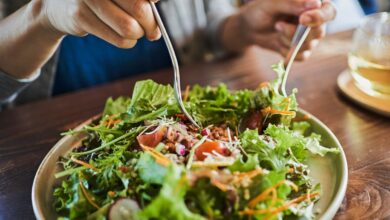Holiday eating and health for the holidays | Fitness tips of the day
By Jannette Dufour, Ph.D.
The holiday season is a special time when people gather with family and friends. It’s also a time of the year when most people consume larger-than-normal amounts of food and drink, mentally tossing those extra calories aside, unless they are one of the millions who live with diabetes.

According to the American Diabetes Association, about 37 million Americans have diabetes and another 96 million are considered to be pre-diabetic, and though they may be dealing with symptoms of the disease, almost 90% have no idea they are at risk.
It is important to be aware of the symptoms associated with diabetes. Common symptoms include frequent urination; extreme thirst; feeling hungry, though you are eating or recently did so; extreme fatigue; blurred vision; and slow healing cuts or bruises.
People with Type 1 diabetes may find themselves losing weight, despite eating more, while those with Type 2 diabetes may experience pain, tingling or numbness in their hands or feet. Until science and medicine can find a cure for diabetes, here are some tips for people trying to enjoy the holidays while simultaneously dealing with the disease.
Plan ahead by finding out how many carbs are in the foods you typically enjoy or want to enjoy during the holidays. When a meal is going to be served at a friend’s home, ask the host what foods will be served. That way you can estimate the carb content and portion your meal once the day arrives. You also may ask if you can contribute a favorite dish, and then you can prepare a blood sugar-friendly favorite of your own to share with the group.
If you’re going to be dining out, look up the menu beforehand for nutrition facts to see how many carbohydrates are in the items. Look for the glycemic index of foods to choose low glycemic carbs. Try to stick with vegetables and lean meats. The ideal plate is half-filled with fruits and vegetables, a quarter with healthy proteins and a quarter with whole grains. If you’re going to be out shopping all day, take some healthy snacks with you like vegetables, dried fruits or nutrition bars.
Develop a food budget and allocate carbs throughout the day, especially ones which include a holiday party or a big meal. Food budgeting can help you more easily stick to your routine.
Once you get off track, it can be hard to get back on track. My advice is to just be aware and try to stay on your routine because most people have developed a routine and a plan that works best for them. Also, don’t skip meals in preparation for a big holiday dinner. This can cause low blood sugar and increase the chances of overeating later. It’s also important to spread your carb intake throughout the day and avoid eating too many carbs in one sitting.
Some alcoholic drinks contain extra sugar, and people don’t always count that in their calories or carbs. For someone with diabetes, it is important to keep this in mind when budgeting carbs for the day. If you are consuming alcohol, have a snack as well.
Test your blood sugar more frequently because during the holidays. We tend to be more active than usual, which may lead to eating different foods at different times than we normally would. For that reason, it may be best to test your blood sugar a few extra times to make sure you’re still in the desired range.
It’s a good idea to carry extra supplies such as test strips, needles, a spare glucometer and some carbohydrate snacks in case you experience low blood sugar. If you’ve been drinking alcohol, or if you’ve been really active, check your blood sugar during the night too because that’s when low blood sugar is more common.
Jannette Dufour, Ph.D., is a professor, researcher and chair of the Texas Tech University Health Sciences Center Department of Cell Biology & Biochemistry. She and her team investigate the use of Sertoli cells to protect cells that make insulin so they can normalize blood glucose levels long-term.


